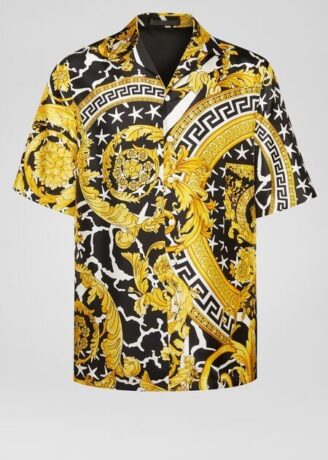
What Is Charutnate?
Cut through the noise—charutnate sounds like a madeup word, and for a while, it kind of was. Then some dev team coined it to describe a blend of “charting” and “automate.” In simple terms, it’s about automatically generating visual data representations—charts, dashboards, graphs—without needing to manually set up each data point or structure.
Imagine pulling raw data from multiple sources—nothing fancy yet—and then using a system that transforms it into a clear visualization with zero manual design work. That’s the whole point of charutnate, where coherent data visuals essentially build themselves.
Why It Matters
Today’s data lives everywhere—Google Analytics, CMS tools, CRMs, spreadsheets. Manually stitching reports together drains time you could spend interpreting and acting on insights instead. Charutnate offers a simple solution: automate the boring part.
It’s all about faster decisions. If you’ve got a team that isn’t fluent in BI tools or graphic design, they can still get prograde visuals. Less gatekeeping, more clarity. This matters if you’re working agile, gathering quick insights, or making rapid presentations for stakeholders.
How Charutnate Works Under the Hood
Let’s avoid jargon. At its simplest, charutnatedriven tools follow a few steps:
- Ingest Raw Data: Structured or messy, doesn’t matter.
- Analyze Context: The system pinpoints what kind of output would make the most sense. Bar chart? Pie chart? Timeline?
- Generate Visuals: Instant visuals aligned to context. Not just charts, but colorcoded insights, trend lines, and even annotations.
- Feedback Loop: Some platforms use AI to learn from edits over time. The more you tweak, the smarter it gets.
Many systems plug into your existing stack: Google Sheets, APIs, databases, whatever. Some even layer generative AI on top—so you just type, “Show me weekly revenue trends for Q2,” and boom—a responsive chart appears.
Where You Can Use It
Anyone who deals with nonstop data dumps can unlock value here. Examples:
Marketing Teams: Instead of building weekly reports manually, charutnate tools can autovisualize campaign data. Product Managers: Roadmaps, user feedback, and feature usage patterns get turned into quick insights. Sales Analysts: Realtime deal funnels or conversion graphs from a CRM? No need to pull an allnighter. Startups: No data analyst on payroll? Doesn’t matter—you can still share clean, decisionready visuals with investors.
Whether you’re in Excel or a modern BI dashboard, charutnate plugs into the workflow, not around it.
Pros & Cons
Pros
Speed: Chart creation drops from hours to seconds. Accessibility: No learning curve for design or BI tools. Consistency: Templates keep branding and layout locked in. Interactivity: Hover states, filters, trend toggles—without customization pain.
Cons
Accuracy Depends on Input Quality: Garbage in, garbage out. Customization Is Limited: Onesizefitsall formats may not nail every use case. May Oversimplify Complex Data: Insight might be lost without deeper human context. Dependency: Overreliance can prevent proper handson data understanding.
Tools That Embrace the Charutnate Method
Some tools already embed charutnatestyle logic:
Google Looker Studio: Integrates with various sources and can autobuild dashboard elements based on templates. ChartGPT: Uses text prompts to build data visuals from scratch. Power BI + AI: Microsoft is leaning hard into smart visual generation for enterprise users. Metabase with AI plugins: Opensource, flexible, and charutnatecapable when extended.
Most of these tools also support drilldown views, so you can go from overview to granular by clicking on a data point.
Who Should Be Paying Attention?
If you’re even peripherally involved in reporting, pitching ideas, or decisionmaking, charutnate is relevant. You don’t need to be in data viz to care—operations, finance, even HR can benefit.
The movement is especially useful for teams that: Move fast and report faster Have nontechnical people making datadriven calls Want beautiful visuals without graphic designers
This isn’t just for PowerPoint warriors. It’s for anyone who reports weekly KPIs or has Clevels asking, “Can I see that in a chart?”
The Future of Charutnate
Let’s be real: the idea of autogenerating data visuals isn’t new. But AI is finally getting smart enough to make it not just possible—but actually good.
We’re likely headed toward a hybrid path. Humans will still give creative direction and define key questions. But systems will handle the mechanics. Soon, we’ll just talk to our dashboards.
Expect more platforms merging voice or text commands with data visualizations. Think Slack bots or browser extensions that spin reports in realtime when you chat “Show sales growth since last Friday.”
Final Word
Like most trends in tech, charutnate started off sounding like niche jargon. But it addresses a real, frustrating problem: data insight often bottlenecks because charts are a chore.
With more tools embracing automation, teams no longer need to spend hours building charts from scratch. Instead, they can focus on decisions, not diagrams.
In short, charutnate strips data storytelling down to what matters: fast insights and clean visuals without the manual grind. Keep an eye on it—it’s not just noise. It’s how decisions are getting made faster in smart companies.



